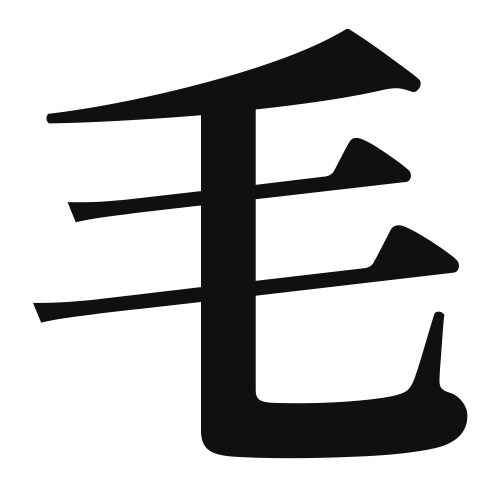1. Overview of Meaning
The kanji “毛” (pronounced “mou” in Japanese) primarily means “hair” or “fur.” It can refer to the fine, soft strands that grow on the bodies of animals and humans. Additionally, it can also imply something that is small or fine in texture.
2. Formation and Radical
The kanji “毛” is a pictogram, originally depicting the image of hair or fur. It belongs to the category of kanji known as “pictographs,” which are characters that visually represent their meanings. The radical for “毛” is also “毛,” which is used in other kanji related to hair or fur.
3. Examples of Usage
Common words and phrases that include “毛” are:
- 毛髪 (もうはつ, mouhatsu) – hair
- 毛皮 (けがわ, kegawa) – fur
- 毛虫 (けむし, kemushi) – caterpillar
In everyday conversation, you might hear:
「彼は毛が長いです。」 (かれはけがながいです。) – “He has long hair.”
4. Synonyms and Antonyms
Similar kanji with related meanings include:
- 髪 (かみ, kami) – specifically refers to human hair.
- 羽 (はね, hane) – refers to feathers, which are also fine and soft but belong to birds.
Antonyms or contrasting kanji include:
- 皮 (かわ, kawa) – skin, which is the outer layer of an animal, contrasting with the fine texture of “毛.”
5. Cultural and Historical Background
The kanji “毛” has significant ties to Japanese culture, particularly in the context of traditional clothing and animal husbandry. In Japan, the quality of hair or fur can symbolize beauty and health.
Proverbs and idiomatic expressions that include “毛” are:
- 毛の生えた子供 (けのはえたこども, ke no haeta kodomo) – “a child with hair,” which can refer to someone who is growing up or maturing.
